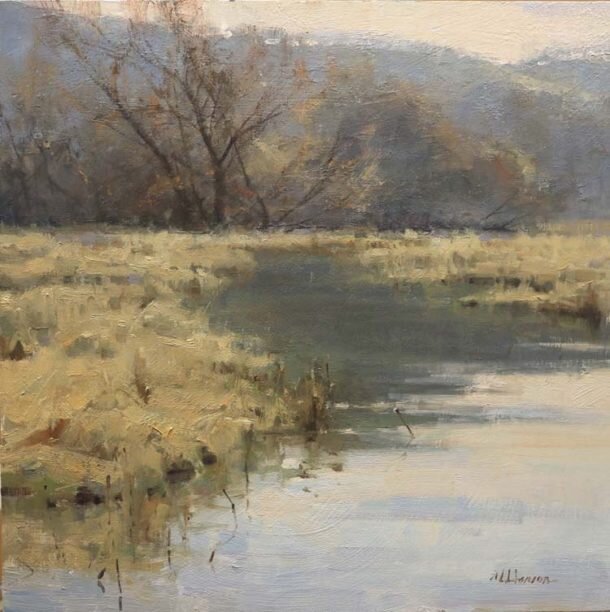Show Preview | American Tonalist Society – Southwest Art Magazine
This story was featured in the May 2019 issue of Southwest Art magazine.
New York, NY Salmagundi Club, May 3-10
Marc Hanson, Spring Silence, oil, 18 x 18.
WHEN FOUR EAST Coast artists founded the American Tonalist Society in 2016, their objective was simple: launch a fine-art exhibition dedicated to showcasing exemplary works created in the tonalist tradition. The 19th-century art movement, which waned considerably as modernism took hold in the 20th century, has experienced a revival in recent years, notes landscape artist and ATS cofounder Eleinne Basa. “We do feel there’s a resurgence in doing these quiet paintings of the landscape that express mood and emotion,” she says. “We saw that and said we should form a show, and the next logical step was to create a group.”
Titled after the neutral colors and limited values that characterize tonalism, the society’s inaugural exhibition and sale—Shades of Gray—opens on Friday, May 3, at the Salmagundi Club in New York City. Founded in 1871, the historic fine-arts center is a fitting venue for the group’s first show, notes Basa. “A large group of 19th-century tonalists would meet at the Salmagundi Club,” she says. “George Inness, J. Francis Murphy, all these famous tonalists would hang their work there.”
Following in the footsteps of their artistic forebears, more than two dozen nationally recognized painters contribute several works each to the debut exhibition, including Basa and ATS cofounders Daniel Ambrose, Donald Demers, and Mary Erickson. They share the walls with Brent Cotton, Douglas Fryer, Marc Hanson, Charlie Hunter, David Sharpe, Karen Vance, and 12 other marquee names who have been inducted as the group’s first Signature members. “We have a good mix of artists from the East and West, so landscape-wise, we have a variety,” says Basa. “Of course, tonalism can appear in other contemporary genres,” she adds. “A city scene can be tonalist, and a still life can have a tonalist feel to it.” Naturally, tonalism can be applied to animal subjects, as well. Conservationist Mary Erickson, for example, showcases a portrait of a bird in varying shades of white.
Basa emphasizes that not everyone taking part in the show paints exclusively tonalist works, but all of the artists were invited to participate because at least some of their works pay homage to tonalism in a traditional or contemporary way. “The gist of tonalism is to awaken an emotion, so that’s what we all agree upon,” she says. “Tonalism is not about portraying all these little details. It’s about the emotion a painting brings to the viewer.” —Kim Agricola
Contact information: www.americantonalistsociety.com
This story was featured in the May 2019 issue of Southwest Art magazine.

